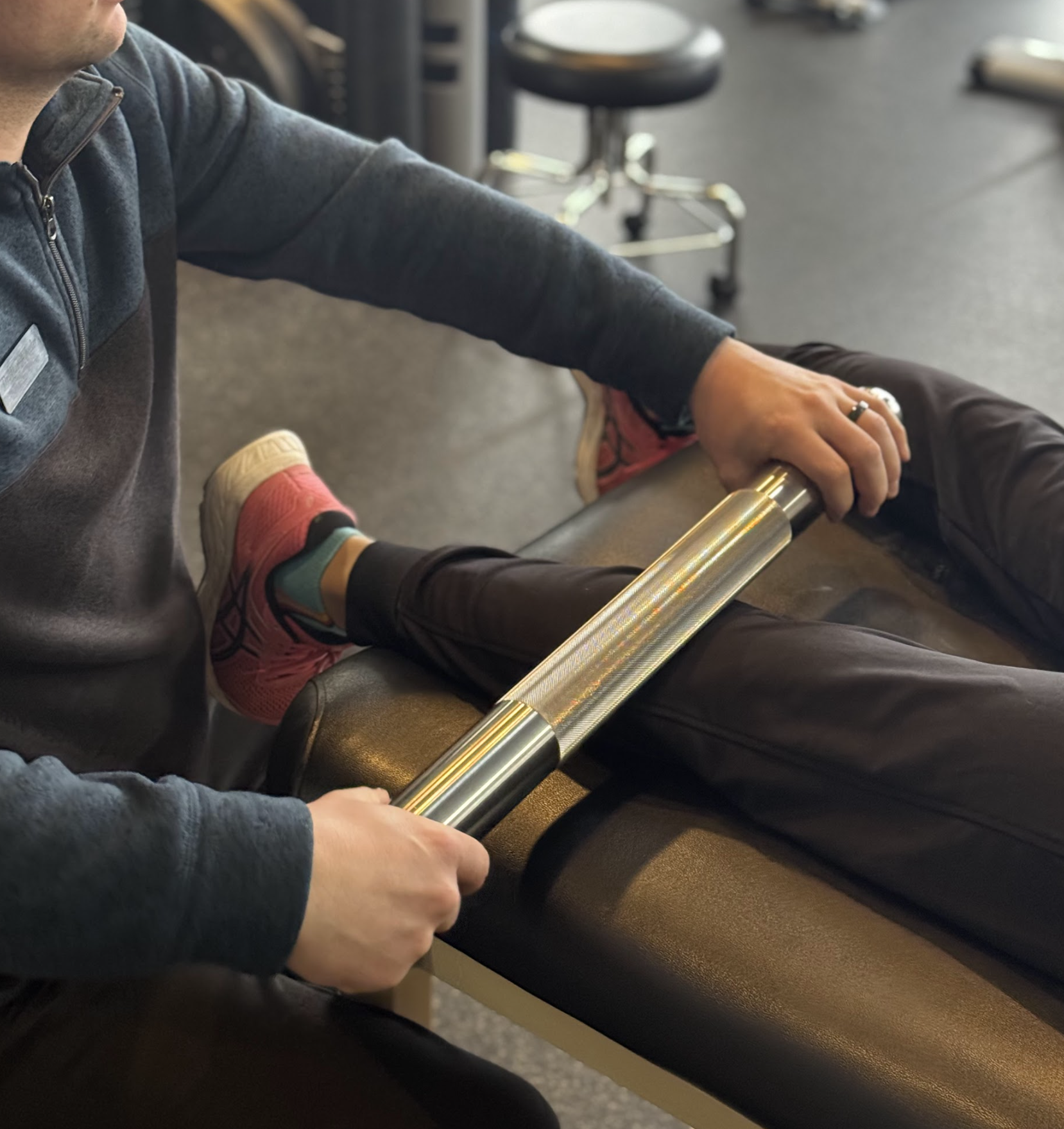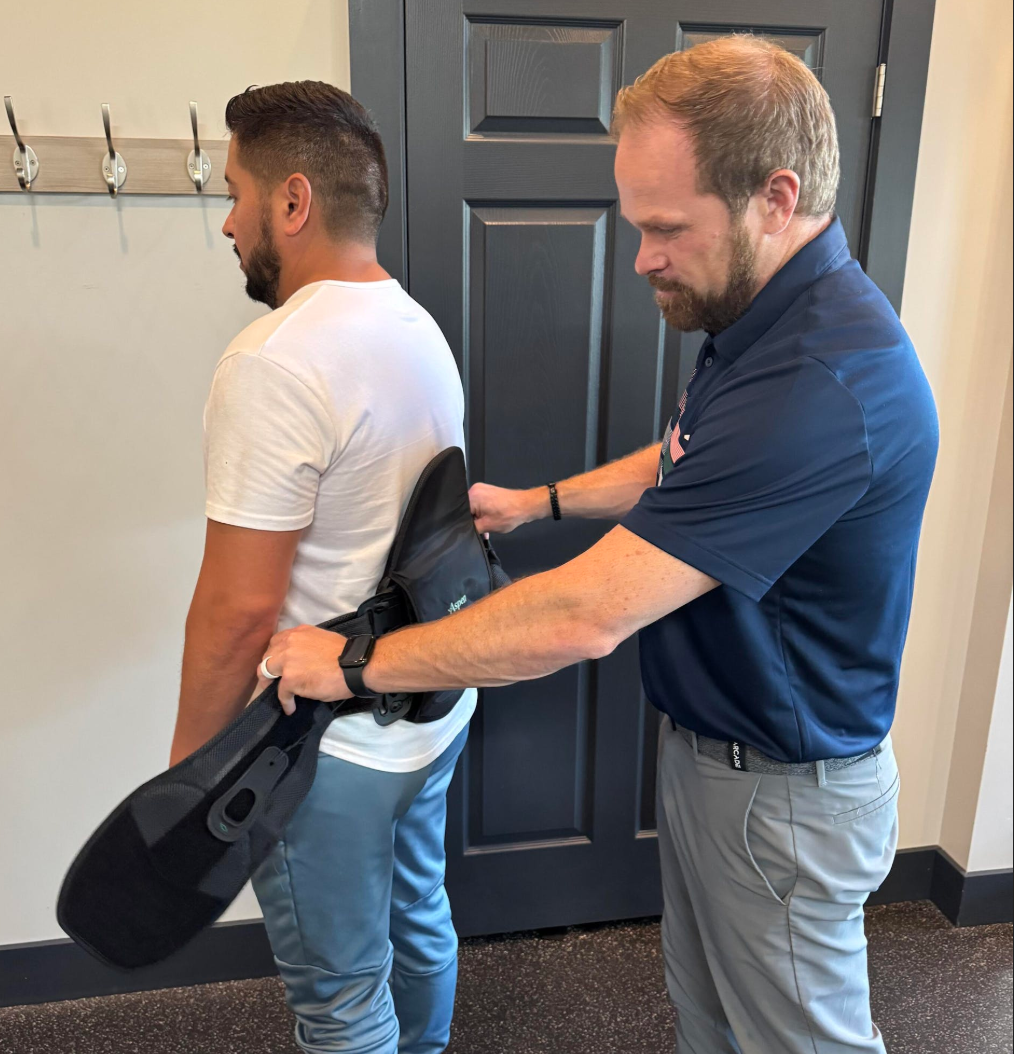Share this article:
Whiplash can leave your neck stiff, sore, and difficult to move. It often follows a car accident or sudden impact and can interfere with daily activities if not treated properly. Physical therapy helps reduce pain, improve mobility, and support a full recovery.
At Advanced Physical Medicine of St. Charles, we offer targeted whiplash treatment through personalized physical therapy plans that help patients heal and get back to normal movement.
What Is Whiplash and What Causes It?
Whiplash is a soft tissue injury that affects the neck. It happens when the head is forcefully thrown backward and then forward, or the reverse, creating a whip-like motion. This rapid movement strains muscles, ligaments, and joints in the neck and upper back.
The most common cause of whiplash is a car accident. It can also result from contact sports, falls, or any sudden force that snaps the head out of alignment. While the severity of the injury can vary, even low-speed impacts can lead to significant pain and dysfunction.
In many cases, symptoms don’t appear right away. It’s common for neck stiffness, soreness, or headaches to develop several hours or even days after the incident. This delay often leads people to underestimate the injury, which can prolong healing if care is delayed.

Common Signs and Symptoms of Whiplash
Whiplash symptoms can vary depending on the severity of the injury and the structures involved. Some people experience discomfort right away, while others may not notice symptoms until a day or two after the incident. Recognizing the early signs can help you seek treatment before the injury becomes more difficult to manage.
Neck and Shoulder Pain
Persistent pain or aching in the neck is the most common symptom. It may be localized or radiate into the shoulders, upper back, or arms. Some patients also feel muscle tightness or spasms in these areas.
Stiffness and Limited Range of Motion
Whiplash often makes it hard to turn or tilt the head. Movements that were once easy, like looking over your shoulder or nodding, can feel restricted or painful.
Headaches
Tension in the neck muscles and joints can lead to frequent headaches. These usually begin at the base of the skull and may travel toward the forehead.
Dizziness and Fatigue
Some individuals report feeling lightheaded, unusually tired, or mentally foggy. These symptoms may be linked to the body’s response to trauma or inflammation around the neck.
Tingling or Numbness
In more serious cases, nerve irritation or compression can cause tingling, numbness, or weakness in the arms and hands. This may indicate involvement of the cervical spine and should be evaluated promptly.
If these symptoms persist or worsen, professional treatment such as physical therapy can help address the underlying causes and promote recovery.
How Physical Therapy Treats Whiplash
Physical therapy focuses on restoring function and reducing pain caused by whiplash. It addresses both the immediate symptoms and the underlying soft tissue damage, helping the body heal while preventing long-term issues.
Pain Relief and Inflammation Control
Treatment often begins with techniques that help reduce pain and calm inflammation. This may include manual therapy, gentle stretching, or modalities such as ultrasound and electrical stimulation. These methods are used to ease discomfort and prepare the body for more active rehabilitation.
Restoring Movement and Flexibility
Once pain is better managed, the focus shifts to improving the range of motion. Guided exercises target the neck, shoulders, and upper back, gradually increasing flexibility and restoring normal movement. This stage is important for reducing stiffness and preventing long-term joint restrictions.
Strengthening Muscles and Supporting Recovery
Weak or imbalanced muscles around the neck and upper spine can make the area more prone to reinjury. Physical therapy includes strengthening exercises to rebuild support around the injured tissues. This helps improve posture, stabilize the neck, and reduce stress on healing structures.
Improving Function for Daily Activities
Everyday tasks like driving, working at a desk, or sleeping comfortably can become difficult after a whiplash injury. Physical therapists tailor treatment to your daily needs, helping you move safely and confidently throughout the day.
Key Benefits of PT for Whiplash Recovery
Physical therapy helps restore comfort, movement, and function after a whiplash injury. It addresses the root cause of symptoms rather than masking them, leading to more lasting results.
Faster Recovery
Targeted treatment helps reduce stiffness and improve mobility sooner than rest alone. Controlled exercises encourage healing without overloading the injured area.
Less Reliance on Medication
Many patients experience pain relief through movement, manual therapy, and posture correction, reducing the need for over-the-counter or prescription drugs.
Lower Risk of Ongoing Pain
Addressing neck dysfunction early helps prevent long-term problems like recurring headaches or restricted motion. Therapy promotes proper mechanics and reduces irritation to soft tissues.
Stronger, Safer Movement
Treatment improves strength in the muscles around the neck and shoulders. This helps patients move more comfortably and reduces the chance of future strain.
When to Start PT After a Whiplash Injury
Early intervention can make a significant difference in how well and how quickly someone recovers from whiplash. In most cases, physical therapy should begin within a few days of the injury, once serious conditions like fractures or neurological damage have been ruled out.

Starting treatment too late can lead to increased stiffness, swelling, persistent pain, and compensations in how the body moves. Gentle, guided exercises introduced early help reduce inflammation, restore motion, and prevent muscles from weakening during inactivity.
If symptoms like
neck pain, limited motion, headaches, or shoulder discomfort continue beyond a few days, it's time to begin whiplash physical therapy treatment. Prompt care helps the body heal more efficiently and reduces the risk of long-term issues.
Why Choose Us for Whiplash Care
At Advanced Physical Medicine of St. Charles, we focus on helping patients recover fully and move confidently again. Our team uses proven physical therapy techniques to reduce pain, restore motion, and improve strength after whiplash injuries.
We understand that no two injuries are the same. That’s why care plans are built around each person’s specific symptoms, lifestyle, and recovery goals. Patients receive focused attention and clear progress tracking at every stage of treatment.
If neck pain or stiffness is holding you back after an injury, we’re here to help. Reach out today to schedule an evaluation and take the next step toward lasting relief.
Connect with Us:











